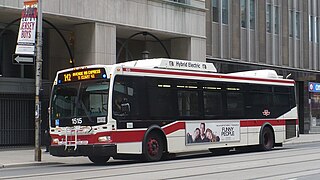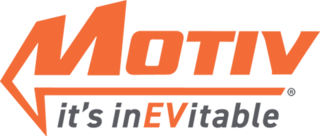The California Air Resources Board is an agency of the government of California that aims to reduce air pollution. Established in 1967 when then-governor Ronald Reagan signed the Mulford-Carrell Act, combining the Bureau of Air Sanitation and the Motor Vehicle Pollution Control Board, CARB is a department within the cabinet-level California Environmental Protection Agency.

Emission standards are the legal requirements governing air pollutants released into the atmosphere. Emission standards set quantitative limits on the permissible amount of specific air pollutants that may be released from specific sources over specific timeframes. They are generally designed to achieve air quality standards and to protect human life. Different regions and countries have different standards for vehicle emissions.

A zero-emission vehicle, or ZEV, is a vehicle that does not emit exhaust gas or other pollutants from the onboard source of power. The California definition also adds that this includes under any and all possible operational modes and conditions. This is because under cold-start conditions for example, internal combustion engines tend to produce the maximum amount of pollutants. In a number of countries and states, transport is cited as the main source of greenhouse gases (GHG) and other pollutants. The desire to reduce this is thus politically strong.

The Toronto Transit Commission (TTC) uses buses and other vehicles for public transportation. In 2018, the TTC bus system had 159 bus routes carrying over 264 million riders over 6,686 kilometres (4,154 mi) of routes with buses travelling 143 million kilometres in the year. As of 2021, the TTC has 192 bus routes in operation, including 28 night bus routes. In 2022, the system had a ridership of 279,650,000, or about 1,133,000 per weekday as of the third quarter of 2023.

An electric bus is a bus that is propelled using electric motors as opposed to an internal combustion engine. Electric buses can store the needed electricity on board, or be fed continuously from an external source. The majority of buses storing electricity are battery electric buses, where the electric motor obtains energy from an onboard battery pack, although examples of other storage modes do exist, such as the gyrobus which uses flywheel energy storage. When electricity is not stored on board, it is supplied by contact with outside power sources. For example, overhead wires as in the trolleybus, or with a ground-level power supply, or through inductive charging.

An electric truck is an electric vehicle powered by batteries designed to transport cargo, carry specialized payloads, or perform other utilitarian work.

Fresno Area Express (FAX), is a public transportation operator in Fresno, California. The system has over 100 buses, 1,606 bus stops, and 18 routes as of August 2022. In 2022, the system had a ridership of 7,707,600, or about 29,200 per weekday as of the third quarter of 2023. FAX fixed routes run as far south as Malaga to Valley Children's Hospital in the north. Lines also run as far east as Fowler Avenue in Clovis, and as far west as Hayes Avenue near Highway 99 in western Fresno.

Antelope Valley Transit Authority is the transit agency serving the cities of Palmdale, Lancaster and Northern Los Angeles County. Antelope Valley Transit Authority is operated under contract by MV Transportation, and is affiliated with and offers connecting services with Metro and Metrolink. In 2022, the system had a ridership of 1,237,200, or about 5,400 per weekday as of the third quarter of 2023.

A battery electric bus is an electric bus that is driven by an electric motor and obtains energy from on-board batteries. Many trolleybuses use batteries as an auxiliary or emergency power source.
United States vehicle emission standards are set through a combination of legislative mandates enacted by Congress through Clean Air Act (CAA) amendments from 1970 onwards, and executive regulations managed nationally by the Environmental Protection Agency (EPA), and more recently along with the National Highway Traffic Safety Administration (NHTSA). These standard cover common motor vehicle air pollution, including carbon monoxide, nitrogen oxides, and particulate emissions, and newer versions have incorporated fuel economy standards.

A fuel cell bus is a bus that uses a hydrogen fuel cell as its power source for electrically driven wheels, sometimes augmented in a hybrid fashion with batteries or a supercapacitor. The only emission from the bus is water. Several cities around the world have trialled and tested fuel cell buses, with over 5,600 buses in use worldwide, the majority of which are in China.

SunLine Transit Agency is a transit operator in Riverside County, California, providing bus service to more than 3.5 million passengers per year in the Palm Springs Area. Service extends into San Bernardino Transit Center during peak hours. In 2022, the system had a ridership of 2,518,000, or about 7,500 per weekday as of the third quarter of 2023.

A low-carbon fuel standard (LCFS) is an emissions trading rule designed to reduce the average carbon intensity of transportation fuels in a given jurisdiction, as compared to conventional petroleum fuels, such as gasoline and diesel. The most common methods for reducing transportation carbon emissions are supplying electricity to electric vehicles, supplying hydrogen fuel to fuel cell vehicles and blending biofuels, such as ethanol, biodiesel, renewable diesel, and renewable natural gas into fossil fuels. The main purpose of a low-carbon fuel standard is to decrease carbon dioxide emissions associated with vehicles powered by various types of internal combustion engines while also considering the entire life cycle, in order to reduce the carbon footprint of transportation.

Merced County Transit, also known as "The Bus", provides public bus transportation services throughout Merced County in the Central Valley and San Joaquin Valley areas of California. Vehicles are owned and maintained by Transit Joint Powers Authority of Merced County with daily operations conducted by a private contractor (Transdev).
The California Statewide Truck and Bus Rule was initially adopted in December 2008 by the California Air Resources Board (CARB) and requires all heavy-duty diesel trucks and buses that operate in California to retrofit or replace engines in order to reduce diesel emissions. All privately and federally owned diesel-fueled trucks and buses, and privately and publicly owned school buses with a gross vehicle weight rating (GVWR) greater than 14,000 pounds, are covered by the regulation.
As of 2017, King County Metro operates the 10th largest fleet of buses in the United States, with a total of 1,540 buses.

Motiv Power Systems is an American manufacturer of all-electric chassis for medium-duty commercial vehicles, based in Foster City, California.

As the most populous state in the United States, California's climate policies influence both global climate change and federal climate policy. In line with the views of climate scientists, the state of California has progressively passed emission-reduction legislation.

The San Mateo County Transit District (SamTrans) fleet of buses has operated throughout San Mateo County since 1976, after county voters approved the formation of samTrans in 1974 to merge 11 predecessor municipal bus systems.

The Proterra EcoRide BE35 is a 35 foot (11 m) fast-charge battery electric bus that seats 38 with a total passenger capacity of 60 in its composite low floor body. Foothill Transit was the first transit agency to operate the buses in revenue service, starting in September 2010. It is the first 30 ft (9 m) or larger, heavy-duty all-electric bus ever to complete federally required durability, reliability and safety testing at the Bus Research and Testing Center in Altoona, Pennsylvania. The 12yr/500,000 mi (800,000 km) STURAA test was completed on March 5, 2012.
















